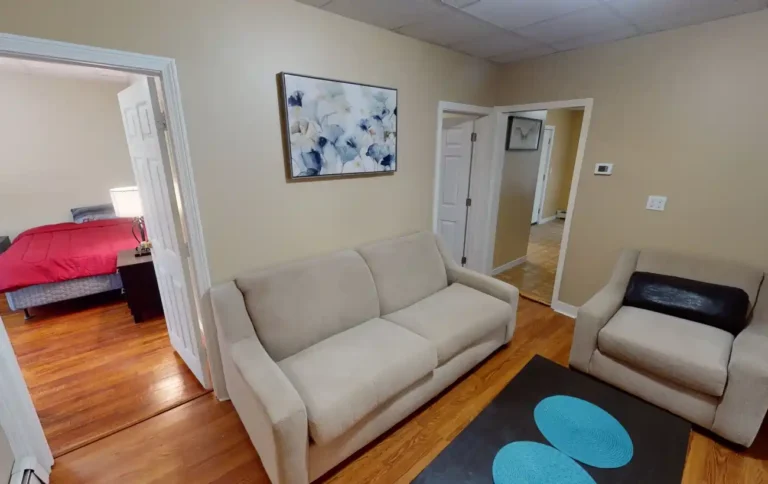
After being released, one trouble some inmates have is finding somewhere secure to live. You’ll want to read through the rules before helping a what is a halfway house friend choose one, and you’ll want them to understand them, too. The rules are vital for the structure and safety of those living in the home.
Child Custody & Support
These staffed facilities provide a sober environment and the guidance of house rules, which can help residents stay on track. You might also see the term “sober living facility,” although there’s a slight difference between the terms. A halfway house, often called a sober living home, is a transitional living facility that bridges inpatient treatment and independent living. They serve as transitional living facilities for people recovering from drug rehab or addiction treatment programs.
How to Start a Halfway House for Jail Inmates

The length of stay gives them enough time to secure a steady job and feel confident in their sobriety. The RRM will contact the referring institution’ s CMC and request the recommended modification be considered . The CMC will facilitate the Warden’s review of the request and advise the RRM accordingly. The Bureau of Prisons shall designate the place of the prisoner’s imprisonment. It allows you to live your life to the fullest, experience all of life’s adventures, make the most out of relationships, and be present in the moment. It doesn’t come without its challenges, however, and it’s beneficial to be around people who can support you on this journey.
Recovery Residences After Treatment
This has resulted in several escapes in addition to other common problems, such as drug use, gang activity, and violence. In a halfway house in New Jersey, around 5,100 convicts have escaped the state’s privately operated facility since 2005. With this report, the federal government has been working on improving its oversight mechanisms and comprehensive adjustments to keep residents safe. Federal halfway houses are designed to help low-risk and high-risk criminals nearing the end of their prison sentences readjust to society.

Federal Halfway House – Everything You Need To Know
- If you attend 12-step or other recovery meetings, you can ask other members of your group for recommendations as well.
- Even basic statistics, such as the number of halfway houses in the country or the number of people living in them, are difficult to impossible to find.
- These houses providean array of services that can include treatment for substance use disorders.
- The housing programs help participants learn life skills, develop vocational skills and find employment.
If you attend recovery meetings, your fellow attendees may also have recommendations. Halfway houses get money from the government, insurance, and tenant fees. Halfway homes emphasize the importance of learning life skills, and that’s what they teach. They’ll teach the residents how to get and keep a job, cook, and pay bills. The person you’re helping must apply to live in a halfway house, and there’s no guarantee the home will accept them.

There’s far more that we don’t know: Lack of publicly available data makes it difficult to hold facilities accountable

Other names include residential reentry centers, halfway house placement, or correctional facilities. A halfway house is a transitional living facility for individuals in the early stages of recovery from substance abuse. It offers a safe and supportive place where they can continue their recovery from addiction to drugs or alcohol after leaving inpatient treatment programs, federal prison, or the streets as a homeless person. In some cases, the court mandates an individual to stay in a halfway house. A sober living facility is usually affiliated with a specific addiction treatment center.

II. Why The BOP Is Reducing Or Cancelling Federal Halfway House Placements
You can work and/or attend school while living in a sober living home, but you’re still required to put effort into your recovery by attending 12-step meetings (or other recovery meetings). Some halfway houses require residents to pass a drug screening and/or breathalyzer test, as they’re not equipped to deal with withdrawal symptoms or delirium tremens. Halfway houses are ideal for people who’ve already gone through medical detox and have completed an inpatient or outpatient treatment program.
In other words, living there for a while might increase the chances that this person can live a normal life without committing crimes. You might ask, “How do we support their transition while respecting their space? Many families face similar questions while trying to navigate the path of recovery alongside their loved ones. Finding employment while residing at the facility forms another essential rule at most homes because it fosters independence and accountability – both vital aspects of sustainable recovery. Besides staying clean, adhering to curfews set by the house management is mandatory. Not sticking with these time limits can attract penalties such as fines or removal from the residence.
What you should know about halfway houses
- Finding employment while residing at the facility forms another essential rule at most homes because it fosters independence and accountability – both vital aspects of sustainable recovery.
- Halfway houses are less disciplined than inpatient rehab centers but slightly more regulated than sober homes.
- When the residents know this, it might encourage them to avoid using drugs.
- The staff at the halfway house will be able to answer any inquiries you may have.